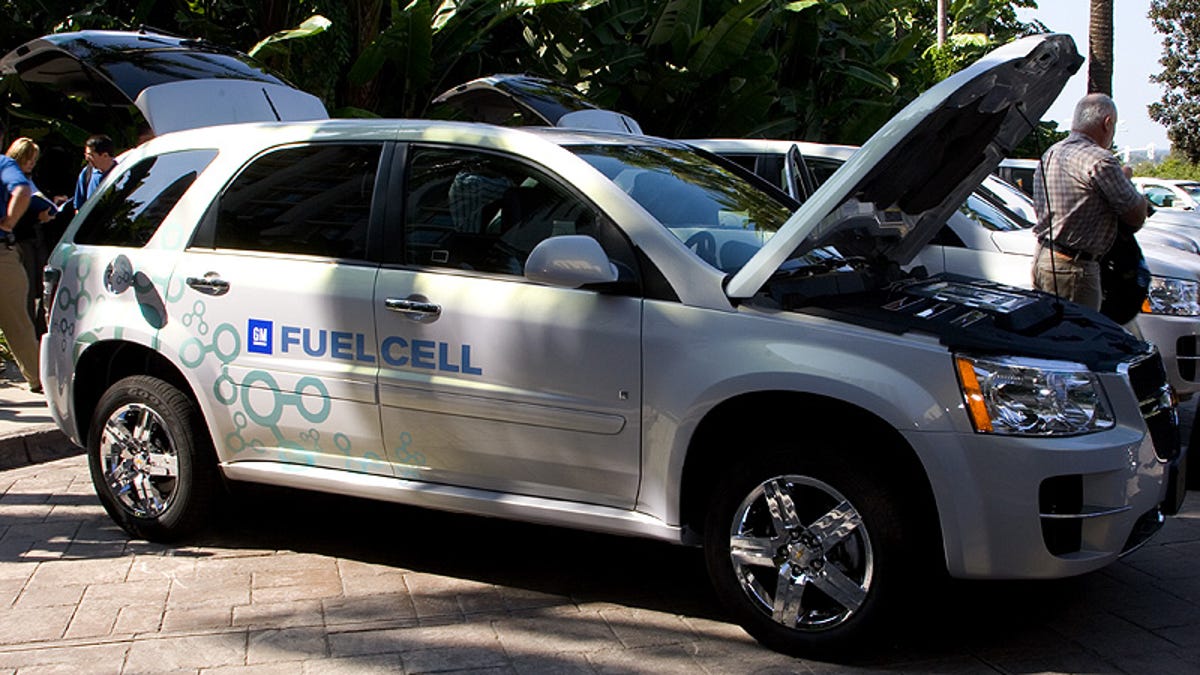Hydrogen-powered Chevys hit the streets
Chevrolet Equinox SUVs that run on hydrogen fuel cells are going into the hands of consumers for real-world testing in three big cities.

Chevrolet is in the midst of launching "Project Driveway," an ambitious program where more than 100 fuel cell electric vehicles will be put in the hands of select consumers for the largest market test ever of its kind.
Testing will take place over the next several months in the Los Angeles, New York and Washington, D.C., metro areas. Drivers range from average consumers to business owners to policy makers. Chevy reps also promise that some cars will go into the hands of "celebrities," but no names have been dropped yet.
The cars are modified Chevy Equinox crossover SUVs that draw hydrogen from three on-board, carbon fiber tanks to power an electric motor. In addition, a nickel-metal hydride battery pack captures and stores energy from a regenerative braking system to provide extra power when needed. The fuel cell Equinoxes get a range of about 150 miles on a single fill-up with 700-bar hydrogen.
The Equinox fuel cell cars run solely on hydrogen, which, at this point in time, is a drawback for the average consumer. Although we produce 40 billion kilograms of hydrogen globally every year--enough to power 130 million fuel cell-powered cars--hydrogen fueling stations are still scarce.
The three test metro areas were chosen, in part, because drivers have access to hydrogen filling stations within a reasonable radius of their homes and/or places of business. General Motors reps say building a hydrogen fueling station infrastructure wouldn't be as difficult as some might think; they say the initial investment of about $10 billion to $15 billion required to put 12,000 stations within two miles of the top 100 urban areas is close to the amount of money being currently spent on maintaining existing oil pipelines and gasoline manufacturing equipment.
The specs for the vehicle aren't overwhelming--it goes zero to 60 in 12 seconds and has a top speed of about 100 miles per hour. But that's still impressive considering the only thing that comes out of the quad exhaust is water vapor.
Features include antilock brakes (ABS), driver and passenger front air bags, roof rail side-impact air bags, and StabiliTrak stability system. The cars are also equipped with the OnStar navigation system, which testers are encouraged to use to ask questions and provide feedback as they drive.
But don't get in line at the local Chevy dealership just yet; the test fleet won't be available for sale to the public. However, the information gleaned from this market test will help shape the next generation of fuel cell vehicles, which GM is working on now.
For a further look at the Equinox vehicles, see "Photos: GM's Chevrolet Equinox Fuel Cell."